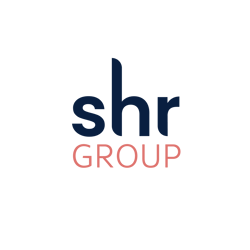Contributed by Estella Hale, V.P. of Product, SHR
Most hoteliers know that in their increasingly competitive hotel markets, fully-functioning technology channels are key. Just one stroll around any HITEC show floor will reveal the myriad and often mind-boggling choices being offered today. Yet many hoteliers are still having trouble getting the most out of their chosen systems. The root of the problem can often be traced not to the individual systems themselves necessarily, but to the integration of the Property Management System (PMS), Central Reservations System (CRS), and the Revenue Management System or RMS platforms. When looking at your technology choices, you want to pick what’s best for you and your particular situation. But to understand what that really means, let’s start with a general overview of the PMS/CRS/RMS connection. These systems will feed distribution channels intelligently, which are typically broken down into direct booking, call centers, GDS (Global Distribution System), and OTAs (Online Travel Agencies).
The CRS should, ideally, publish to each channel recommendations from the RMS, which in turn gathers information from the PMS—ultimately resulting in your best tech strategy.
Interface Communication
To de-mystify your system, you need to look at what your PMS and CRS interfaces are saying to each other, and what they are communicating to the RMS. Some interfaces are very robust, and some are not, but in any system, reservations always take precedence. So, when you are evaluating a new system, or simply trying to better-master your current system, you need to figure out what are non-negotiable categories for your interface, and what are simply nice-to-haves. For instance, if you are a group-heavy hotel, you would want to make sure that you have full group functionalities that work well with group rates. And when it comes to optimum rate calculations, having a well-tuned RMS system that in turn works within cleanly managed PMS and CRS interfaces can allow you to better position your hotel with your competitors in your comp set.
Ensuring Clean Distribution
The direct booking engine, a definite priority, should be customizable within your CRS to differentiate your hotel in its marketplace. For your call centers, you should be able to channel-specific offers to them via your CRS. With OTAs, you should be able to organize them by rate codes via the mapping that lives in your CRS. The GDS is integral, so you should have great offerings pushing through your CRS to your GDS platforms. With OTAs, looked at as both booking and shopping channels, your CRS should have a good integration with OTAs specific to your market.
One tip for getting more out of your systems overall is making full use of your CRS system’s double derivation functionality; to first, help ensure clean distribution of your retail offerings across all your channels, and second, to allow for quicker and easier adjustments to your discount amounts. For example, many people will try to drive all the advance purchase rates codes directly off BAR. But this means any adjustments will require going through every single rate code for every channel. An easier way would be to derive your retail rate code off BAR, then derive all your secondary rate codes from that. By doing it this way, when you see what your RMS recommends for a particular rate group, you can do one update at the retail level and you’re done.
Reducing Booking Abandonment
Once a guest makes a reservation, does everything the channel or booking engine collects get passed on to your hotel? This is important to know because things can (and do) go wrong—reservations can time out and servers can stall, interfering with the reservation completion—something no one wants. This is another area where a robust CRS can really help, sending a message if any system communication breaks down. And if you can loop your PMS and RMS providers into these error situations, you can keep things running even smoother.
Clearer Guest Communication
Do you have full flexibility to communicate with your guests via your CRS and PMS both pre and post-stay? Are you getting guest data in a format that’s actionable for your RMS so that the algorithms it runs are as accurate as possible? With a robust CRS, you should be able to get what you need when you need it. In addition, regularly looking at your website and booking through your guests’ eyes can help you put yourself in their place, and run through your system as they would, then adjust as needed. Remember, your system is only as good as the information you put in, and also only as good as your PMS/CRS/RMS integration strategy.
Things You Can Start Right Now
- Review what currently flows (or doesn’t flow) between your PMS, CRS, and RMS
- Make sure that your systems, including RMS, are freely “talking” to each other
- Audit at least twice a year, and make sure to enact all system updates promptly
- Play the role of the guest to see what they see, and keep “junk” out of your system
- Aggressively pursue full connectivity with your tech partners


